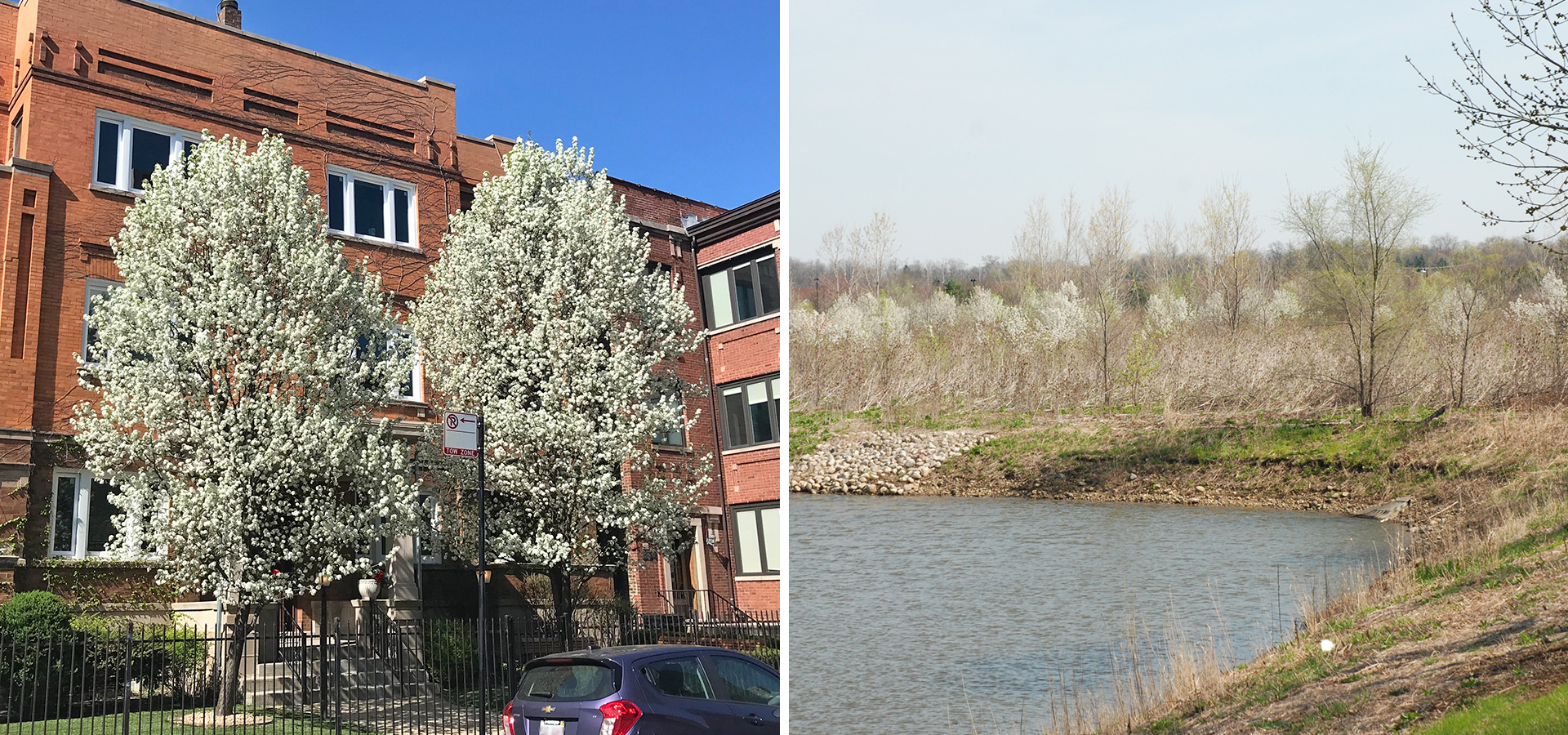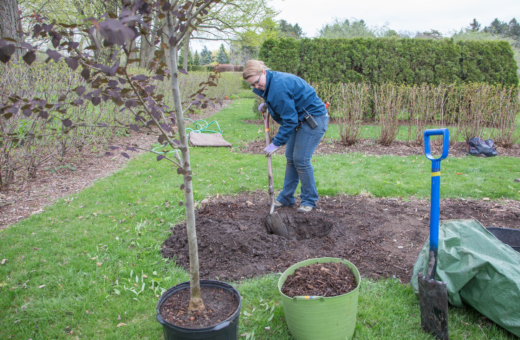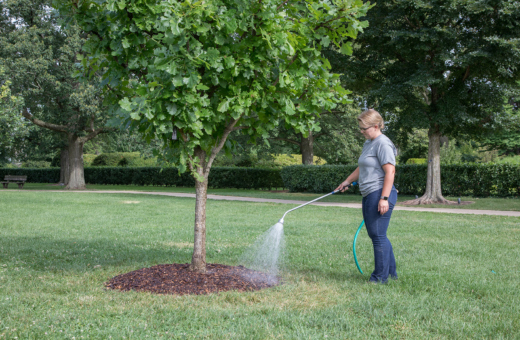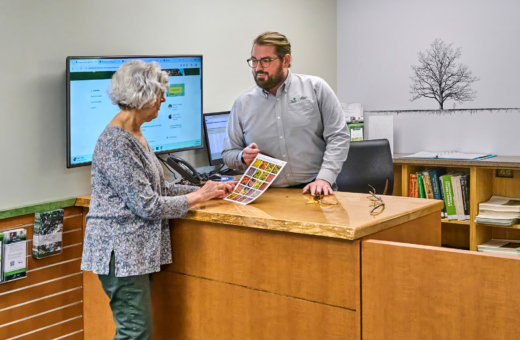May 6, 2024
In spring, Callery pear trees in gardens and along streets become tall clouds of fluffy white bloom. They’re lovely. There’s just one problem: They also bloom in a lot of places where they are not supposed to be.
Too often, they sprout in woodlands and natural areas, where birds that eat their fruit incidentally drop the seeds. These trees from China out-compete the seedlings of native trees such as oaks, wildflowers, and other native plants.
Callery pear trees are a prime example of the many garden plants that have escaped cultivation to invade natural areas and wreak havoc in ecosystems. (Photos above by Kris Bachtell/The Morton Arboretum).
Invasive plants are defined as non-native plants that have a negative ecological, economic or health impact.
One way they can have a negative impact is by spreading much more easily than native plants. As a result, they disrupt local communities of plants and animals in natural areas such as forest preserves and state parks.
“They’re not just weeds that are annoying in your garden,” said Sharon Yiesla, plant knowledge specialist at The Morton Arboretum in Lisle. “They do real damage in the world.”
May, the time when many gardeners are choosing plants to include in their home landscapes, is Invasive Species Awareness Month. Gardeners’ choices are critical in the fight against invasive plants.
A plant can become an invasive problem when it is taken out of its native ecosystem and planted where it lacks natural enemies to control its growth. That allows it to reproduce and spread so freely that it overwhelms local plants, such as native wildflowers.
“Our gardens are full of plants that have been brought from around the world because they are ornamental,” Yiesla said. “Most of them do not become invasive in the Midwest, but the ones that do cause very serious harm.”
Here are some examples of invasive plants still to be found in many Chicago-area gardens:
Yellow flag iris (Iris pseudacorus). This plant, with yellow blooms in May, chokes wetland habitats. Native to temperate parts of Europe, Asia and Africa, it was imported for gardens in the 1700s.
Japanese barberry (Berberis thunbergii). Widely planted in Midwestern yards for its red fall color and bright berries, this shrub from Asia is easily spread by birds that eat the berries and deposit the seeds.
Burning bush (Euonymous alatus). Planted for its vivid pinkish-red fall color, this Asian shrub is also spread very easily by berry-eating birds.
European buckthorn (Rhamnus cathartica). Widely planted for hedges in the 19th and 20th centuries, this shrub or small tree from Europe has become a scourge. According to the Arboretum’s 2020 Chicago Region Tree Census, 36% of all the trees in Cook and the six surrounding counties are this one species. Buckthorn not only crowds out other plants, it alters the soil chemistry in ways that encourage other invasive plant species to grow. In Illinois, it is illegal to buy or sell any species of buckthorn.
Purple loosestrife (Lythrum salicaria): Once popular in gardens for its tall spikes of purple flowers, this perennial spreads swiftly and chokes out native plants in wetlands.
Gardeners take action
What can gardeners do to combat invasive plants?
“The first step is to get to know the plants in your yard,” Yiesla said. “Once you identify your shrubs and perennials, you can check whether they are known to be invasive.”
Definitions of “invasive” plants vary, but even plants that have not been formally labeled invasive can cause problems. The Plant Clinic can help you ID plants, determine whether they are invasive or problematic, and find better plants to replace them.
Don’t assume that a plant is benign because you see it in other people’s yards. “Some very popular garden plants, such as Callery pear and burning bush, are invasive,” she said.
The Chicago Region Trees Initiative’s Healthy Habitat program offers advice on removing and replacing invasive woody plants such as buckthorn. The Midwest Invasive Plant Network has an extensive list of plants known to be invasive in Midwestern states.
“Becoming aware of the invasive plant problem is an important first step,” Yiesla said. “The next step is figuring out whether any plants in your garden might be contributing to it. Then you have a world of beautiful native plants and other noninvasive plants to consider as alternatives.”



